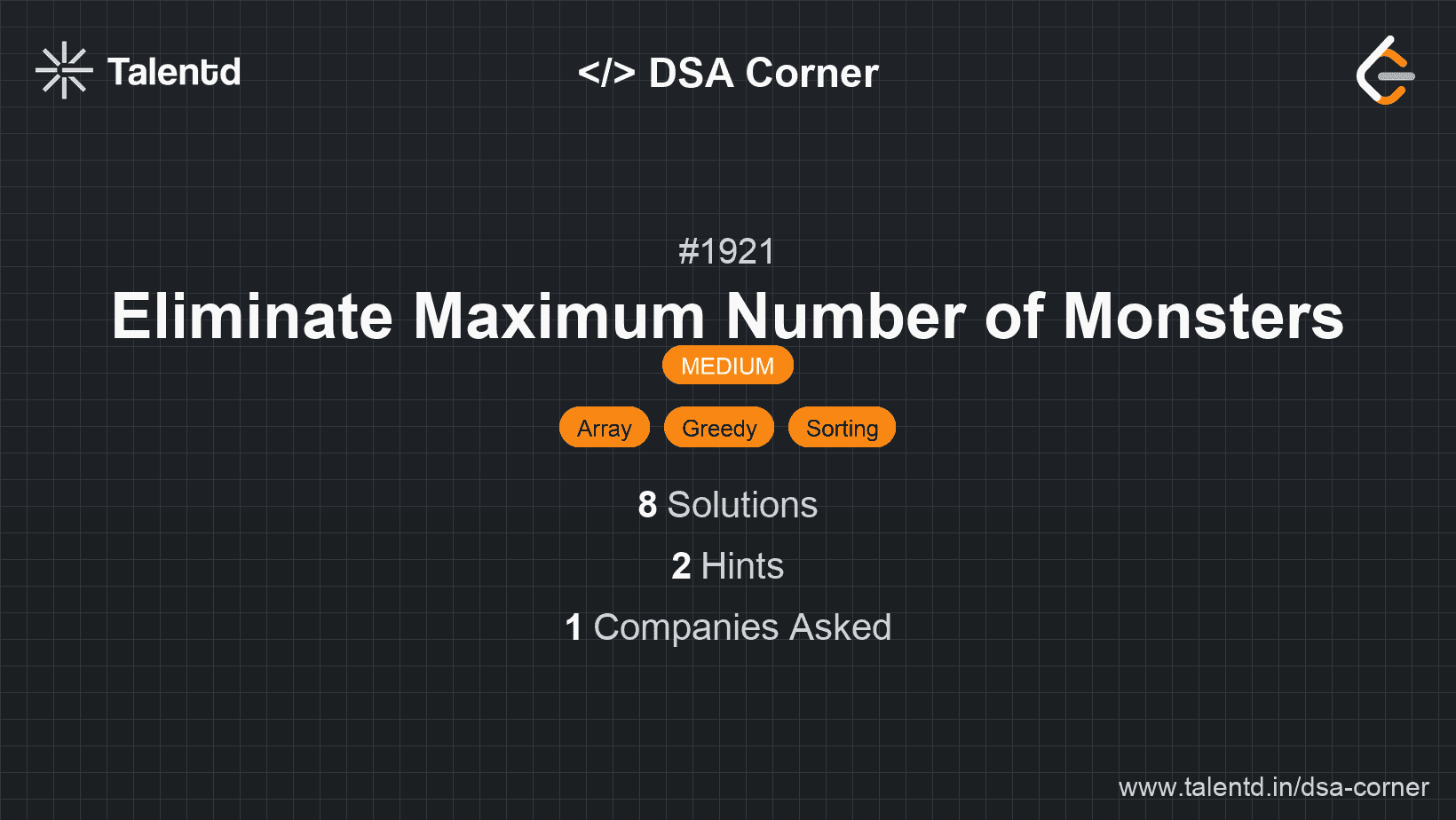
Sponsored
Sponsored
This approach involves computing the exact time each monster will take to reach the city and then eliminating them in the order of their arrival times. The goal is to eliminate as many monsters as possible before any monster reaches the city.
Time Complexity: O(n log n) due to sorting the times.
Space Complexity: O(n) to store the arrival times.
1function eliminateMaximum(dist, speed) {
2 let time = dist.map((d, i) => Math.ceil(d / speed[i]));
3 time.sort((a, b) => a - b);
4 for (let i = 0; i < time.length; i++) {
5 if (time[i] <= i) {
6 return i;
7 }
8 }
9 return time.length;
10}
11
12console.log(eliminateMaximum([1, 3, 4], [1, 1, 1]));This JavaScript solution similarly involves calculating times to arrival and sorting them. The index is tracked as a representation of time, stopping if it equals or exceeds a monster's arrival time.
This approach improves the efficiency of eliminating the maximum number of monsters by using a binary search method. It pre-calculates when a monster will reach the city and uses efficient search techniques to make decisions dynamically during the elimination process.
Time Complexity: O(n log n) due to the sort operation.
Space Complexity: O(n) to store arrival times.
1function eliminateMaximum(dist, speed) {
2
This solution uses a binary search-inspired thought process but leverages JavaScript's sort and conditional checks with the built-in array methods for a straightforward solution.